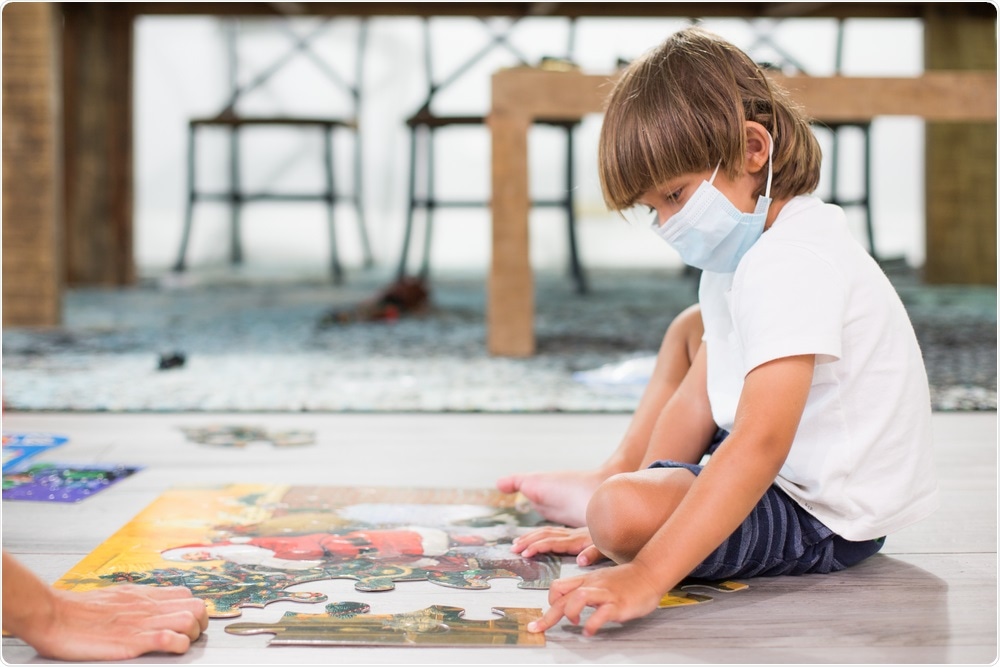A team of scientists from Germany has tested children and staff members of several daycare centers in the state of Hesse, Germany, to detect the prevalence of severe acute respiratory syndrome coronavirus 2 (SARS-CoV-2) infection.
Their findings suggest that SARS-CoV-2 infection rarely occurs in daycare centers, and thus, these centers should not be considered as potential reservoirs of the virus. The study is currently available on the medRxiv* preprint server.
Since the emergence of the coronavirus disease 2019 (COVID-19) pandemic, many studies have been done to identify the susceptible individuals who are at higher risk of developing severe SARS-CoV-2 infection. While most of these studies have indicated that elderly people are highly susceptible to severe infection, pre-school children are mostly considered the low-risk population in terms of getting a severe infection.
However, the closure of schools and daycare centers during the lockdown period at the beginning of the COVID-19 outbreak in Germany has been found to negatively impact the overall wellbeing of children. Children from low socioeconomic backgrounds and those with special educational needs (SEN) are believed to have been greatly affected by limited educational access relating to lockdown measures.
Since SARS-CoV-2-infected children mostly remain asymptomatic or mildly symptomatic, it is possible that they may unknowingly transmit the virus to their caregivers, teachers, and fellow mates while attending schools or daycare centers. Therefore, it is generally assumed that children with unnoticeable signs and symptoms should be tested frequently for possible viral infection to help break the transmission chain.
Current study design
The SAFE-KiDS-Study by researchers at Goethe University, the German Centre for Infection Research, the Fraunhofer Institute, and the Hessian State Examination and Investigation Office in Health Care (HLPUG), was conducted for the early detection of SARS-CoV-2 infection in daycare centers in the state of Hessen, Germany, using both respiratory (buccal mucosa swab) and gastrointestinal (anal swab) samples. The scientists did not use nasopharyngeal or oropharyngeal swab samples to gather these samples as this approach needs careful supervision of healthcare professionals. In contrast, buccal mucosa and anal swabs can be collected easily from children by their parents.
The scientists tested 825 children (age range: 3 months to 8 years) and 372 staff members (age range: 19 to 64 years) from 50 daycare centers located throughout the state for respiratory and gastrointestinal shedding of SARS-CoV-2. They conducted the tests weekly for a period of 12 weeks.
As per government rules, children and staff members with respiratory infection symptoms, except for runny noses, were not allowed to enter the daycare centers. Children and staff members with possible contact history or with symptomatic family members were also not allowed in the centers. However, mask-wearing was not mandatory for children or staff members.
Important observations
The scientists tested a total of 7,366 buccal mucosa swabs and 5,907 anal swabs. Detection of SARS-CoV-2 was performed by real-time polymerase chain reaction (RT-PCR) tests, which look for the virus’ genetic code in host cell samples.
Of all the study’s participants, only two staff members from different daycare centers tested positive for SARS-CoV-2. One of them was asymptomatic and was unaware of having the infection at the time of testing. The other person was symptomatic. All the staff members and children from these two daycare centers were sent for home quarantine. None of the study children tested positive for SARS-CoV-2.
At the end of the study, the scientists conducted a survey to check if any participants had been diagnosed with COVID-19 during their home quarantine period. However, none of them reported having a positive diagnosis.
In the study regions, the overall prevalence of SARS-CoV-2 infection was low in the general population as well as in the children below 6 years during the study period. Although the numbers of COVID-19 cases varied between regions and study weeks, the highest prevalence was 66 cases per 100,000 residents.
Study significance
The study findings indicate that the risk of active SARS-CoV-2 infection transmission among children and staff members of daycare centers may be considerably low in regions with a low prevalence of COVID-19. Unlike other respiratory viruses – such as the influenza A virus, where children are highly susceptible to get and further transmit the infection – SARS-CoV-2 seems to be rarely transmitted through children, at least in restricted setups.
The study signifies that schools or daycare centers do not appear to be potential hubs of viral transmission, at least in regions where the overall incidences of COVID-19 cases are low. Proper implementation of control measures, such as restricted access to facilities, may be vital to containing the spread of SARS-CoV-2.
*Important Notice
medRxiv publishes preliminary scientific reports that are not peer-reviewed and, therefore, should not be regarded as conclusive, guide clinical practice/health-related behavior, or treated as established information.
